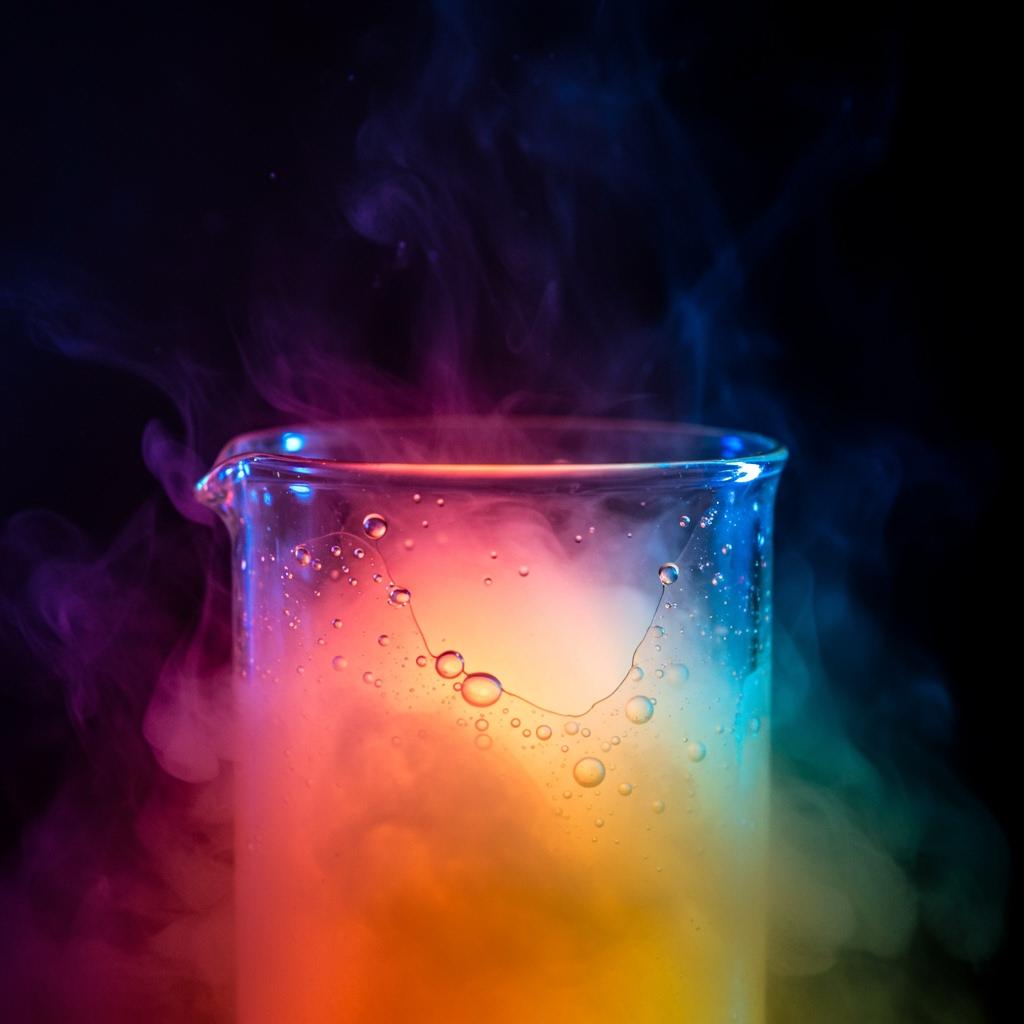Superacids Strong Enough to Melt Glass
 Superacids, like fluoroantimonic acid, are so powerful they can dissolve glass, a feat unimaginable for ordinary acids.
Superacids, like fluoroantimonic acid, are so powerful they can dissolve glass, a feat unimaginable for ordinary acids.
The hidden power beyond ordinary acids
By Peter Teoh, Science Writer
Imagine an acid so strong it can eat through glass, the material that usually protects us from dangerous chemicals. Welcome to the fascinating world of superacids — acids that are millions to billions of times stronger than sulfuric acid, one of the strongest acids you probably already know.
What Are Superacids?
In chemistry, acids are substances that can donate protons (H⁺ ions) to other molecules. The strength of an acid is measured by how easily it gives up these protons. Regular strong acids like sulfuric acid (H₂SO₄) or hydrochloric acid (HCl) are well known, but superacids take this power to a whole new level.
Superacids are acids stronger than 100% pure sulfuric acid. This means they have a higher chemical potential for protons, making them incredibly reactive[1][2]. The acidity scale for superacids uses something called the Hammett acidity function (H₀). While sulfuric acid has an H₀ of about -12, superacids like fluoroantimonic acid can reach values as low as -31, meaning they are about 10¹⁹ times more acidic than sulfuric acid![2]
How Do Superacids Work?
Superacids are usually made by mixing a very strong acid with a powerful Lewis acid (a substance that can accept an electron pair). For example, fluoroantimonic acid is made by combining hydrogen fluoride (HF) with antimony pentafluoride (SbF₅). When these two combine, they form an acid so powerful it can protonate molecules that normal acids cannot touch—even hydrocarbons like methane![3][6].
This happens because the mixture stabilizes the negative charge on the acid’s anions (negatively charged ions) very well, allowing the proton to be extremely reactive and effective at attacking normally stable molecules[1].
Why Can Superacids Melt Glass?
Glass is mainly made of silicon dioxide (SiO₂), a very stable and tough material resistant to most chemicals. Even strong acids like hydrochloric acid don’t affect it much. But superacids, with their extreme ability to donate protons, can break down the strong bonds inside glass.
Specifically, superacids can protonate oxygen atoms in the glass structure, weakening the silicon-oxygen bonds until the glass dissolves or melts away[6]. This property is so extreme that glass containers are usually avoided when working with superacids—special materials like Teflon are used instead.
Real-World Uses of Superacids
Despite their dangerous nature, superacids have important uses in chemistry and industry:
-
Creating carbocations: These are positively charged carbon atoms crucial in making plastics and high-octane fuels. Superacids help produce and stabilize them for research and manufacturing[6].
-
Catalysts in chemical reactions: Superacids speed up reactions like hydrocarbon isomerization, helping convert straight-chain molecules into branched ones, which are better fuels[7].
-
Breaking down tough molecules: Their power can break down substances that normal acids cannot, opening doors to new chemical processes[1][7].
Safety and Handling
Superacids are extremely corrosive and dangerous. They can cause severe burns, release toxic fumes, and react violently with water. Handling them requires special equipment, protective gear, and training. Their ability to dissolve glass means ordinary lab containers are unsafe; instead, chemists use fluoropolymer containers like Teflon.
The Science Behind the Name “Magic Acid”
One famous superacid is called Magic Acid, a mixture of fluorosulfonic acid (FSO₃H) and antimony pentafluoride (SbF₅). It got its name because it can dissolve a candle made of wax—something that you’d never expect an acid to do![6]. This magic comes from its ability to protonate alkanes (components of wax), turning them into charged intermediates that break apart.
Side Notes
-
Hammett Acidity Function (H₀): A scale to measure acid strength beyond pH, especially useful for superacids.
-
Carbocations: Positively charged carbon species involved in many chemical reactions; stabilized by superacids.
-
Lewis Acid: A molecule or ion that accepts an electron pair, often used to boost acidity when mixed with Brønsted acids.
Trending Sidebar
-
New superacid research: Scientists are exploring solid superacids like certain zeolites and resins that combine extreme acidity with solid form, useful for green chemistry.
-
Superacids in space science: Understanding superacids helps explain some of the chemical reactions in extreme environments like planetary atmospheres.
-
Superacids and energy: Their role in improving fuel production and cleaner energy technologies is an exciting frontier.